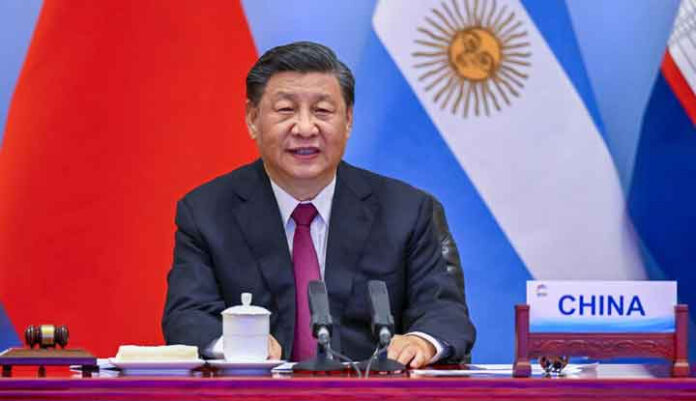
China’s population has continued its downward trajectory for the third consecutive year, signaling a critical turning point for the nation. By the end of 2024, the population is projected to stand at 1.408 billion, reflecting a 13 million decline from the previous year. This ongoing decrease has raised significant concerns within the government, led by President Xi Jinping, who faces mounting pressure to address the implications of this demographic shift. The decline is primarily attributed to a falling birth rate, a challenge exacerbated by the country’s long-standing One-Child Policy and the shifting economic landscape. In this article, we delve into the multifaceted reasons behind China’s declining population, the socio-economic consequences, and the country’s future in the face of these demographic challenges.
The One-Child Policy and Its Long-Term Effects
The roots of China’s demographic crisis can be traced back several decades, notably to the One-Child Policy implemented in 1979. Initially, the policy was introduced to curb China’s rapidly growing population, which was putting a strain on the country’s resources and economic infrastructure. Under the policy, each family was restricted to having only one child, with heavy penalties for non-compliance, including forced abortions and fines.
While the policy succeeded in slowing population growth for several decades, its long-term consequences are now becoming evident. The most pressing issue is the aging population. China’s demographic pyramid has become increasingly top-heavy, with a growing proportion of elderly citizens and fewer young people entering the workforce. In 2024, approximately 22% of China’s population is over the age of 60, and this figure is expected to rise to 30% by 2035. The shrinking younger population is now insufficient to support the needs of the elderly, creating a labor shortage and increasing the economic burden on younger generations.
Declining Birth Rate: The Core of China’s Population Crisis
One of the key factors driving China’s population decline is the declining birth rate. The once-successful One-Child Policy was officially phased out in 2016, replaced by the Two-Child Policy and, more recently, the Three-Child Policy in 2021. Despite these changes, the birth rate has not seen significant improvement. In fact, China’s fertility rate remains far below the replacement level of 2.1 children per woman.
This stagnation in birth rates can be attributed to several societal shifts. Younger generations are now delaying marriage, focusing more on career development, financial stability, and education before considering family life. Furthermore, the rising cost of living and the increasingly competitive job market make it difficult for young families to afford having multiple children. Housing prices, education fees, and the high cost of childrearing are among the top concerns cited by young Chinese citizens when deciding whether or not to have children.
The government’s efforts to incentivize larger families, such as providing financial subsidies and tax breaks, have yet to yield the desired results. The Three-Child Policy and related measures have had limited success in reversing the trend. The fact remains that many young people in China simply do not view having children as a viable or desirable option.
Economic Consequences of a Shrinking Workforce
The economic repercussions of China’s declining population are far-reaching and could profoundly affect the nation’s future growth prospects. China’s labor force is already shrinking, and with fewer young people entering the workforce, the country is facing a labor shortage. This demographic shift is likely to lead to increased wages for the remaining workers, which could negatively impact China’s manufacturing sector, long the cornerstone of its economic success.
In addition to the labor shortage, China’s aging population presents another challenge. As the number of elderly citizens grows, the country will need to allocate more resources toward healthcare and pension systems. This will place additional strain on China’s public finances, especially given the relative decline in the working-age population that funds these systems through taxes. Social welfare costs are projected to rise significantly, potentially diverting funds from other important areas such as infrastructure and technology development.
Urbanization and Migration: Changing Demographics Within China
Another key factor contributing to China’s shifting demographic landscape is the rapid pace of urbanization. In recent years, more than 10 million people have migrated from rural areas to urban centers. As of 2024, approximately 67% of China’s population now lives in cities, a rise of nearly 1% compared to the previous year. This migration has had significant effects on China’s demographic composition, as urban areas tend to have lower birth rates and a higher concentration of working-age individuals.
However, the increased urban population density and rising living costs in cities have led many young people to reconsider starting families. The high cost of housing and the pressure to maintain a high standard of living in urban areas have deterred many potential parents from having more than one or two children. Additionally, the concentration of job opportunities in cities has created a more competitive job market, further complicating the decision to have children.
Gender Imbalance: A Growing Concern for China
China also faces a significant gender imbalance due to the long-standing cultural preference for male children. According to government reports, there are approximately 104 men for every 100 women in China, which has resulted in a skewed sex ratio. This imbalance is a direct consequence of the One-Child Policy and the cultural preference for male heirs, which led to an increase in female infanticide and sex-selective abortions.
This gender imbalance has several far-reaching implications. The shortage of women in China has led to an increasing number of single men, particularly in rural areas, who struggle to find partners. This, in turn, has contributed to the declining birth rate, as many men are unable to marry and start families. The gender disparity also poses significant social challenges, as the imbalance can contribute to social unrest and tension, especially in regions with high concentrations of unmarried men.
China’s Efforts to Reverse the Population Decline
Despite the alarming trends, China’s government has taken several steps in an attempt to reverse the population decline. In addition to the introduction of the Three-Child Policy and financial incentives for families with more children, China has also launched campaigns to encourage young people to marry and have children. These efforts include providing tax breaks, subsidized housing, and education support to young families.
However, these measures have proven largely ineffective. The main issue remains that many young people in China prioritize their careers, personal freedom, and financial security over the prospect of starting a family. Until these underlying societal concerns are addressed, it seems unlikely that China will see a significant reversal of its population decline in the near future.















